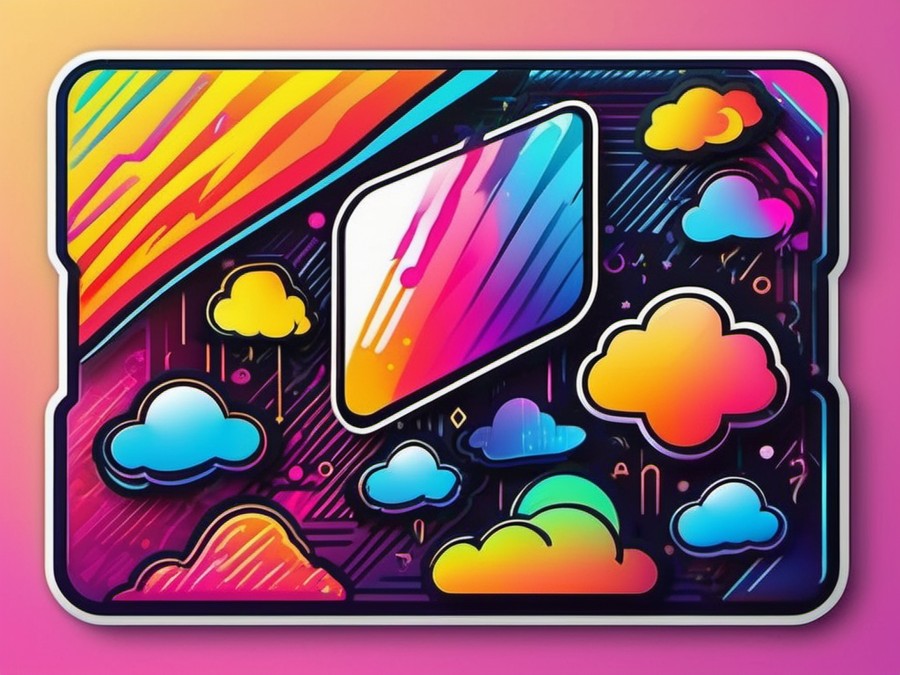· Charlotte Will · Screen Protector Foils · 8 min read
What is the Impact of Screen Protector Foils on Touch Sensitivity?
Discover how screen protector foils affect touch sensitivity and learn tips for choosing the right protector. Optimize your device's screen protection without compromising responsiveness.

Understanding Screen Protector Foils
What are Screen Protector Foils?
Screen protector foils are thin, transparent films designed to protect your smartphone or tablet screen from scratches, cracks, and other forms of damage. They’re typically made of materials like PET (Polyethylene Terephthalate), TPU (Thermoplastic Polyurethane), or tempered glass. The foil is applied over the screen and adheres to it, providing an additional layer of protection without altering the device’s appearance or functionality significantly.
Types of Screen Protector Foils
PET (Polyethylene Terephthalate) Foils
PET is a lightweight, flexible material often used in budget-friendly screen protectors. PET foils provide good scratch resistance but are less effective against drops and heavy impacts compared to other materials. They’re easy to install and generally don’t affect touch sensitivity much, but they may not offer the same clarity as more expensive options.
TPU (Thermoplastic Polyurethane) Foils
TPU is known for its flexibility and shock-absorbing properties. TPU foils can stretch slightly, which helps absorb the impact of drops and reduces the likelihood of screen damage. However, TPU protectors can sometimes affect touch sensitivity due to their thickness and flexibility.
Tempered Glass Screen Protectors
Tempered glass offers the highest level of protection against scratches and impacts. Tempered glass screen protectors are thicker than PET or TPU foils, which can potentially reduce touch sensitivity. However, they provide superior clarity and durability.
The Importance of Foils in Screen Protection
Screen protector foils are crucial for safeguarding your device’s screen. They prevent everyday scratches, which can accumulate over time and degrade the screen’s quality. Moreover, they add a layer of protection against drops and impacts, reducing the risk of serious damage or screen replacement costs.
How Do Screen Protector Foils Affect Touch Sensitivity?
The Science Behind Touch Sensivity
Touchscreens utilize capacitive technology to detect touch input. When you press on the screen, you complete a circuit, which the device interprets as a touch command. The thickness and material of the screen protector affect how accurately this circuit is completed, influencing touch sensitivity.
Factors That Influence Touch Sensitivity with Screen Protectors
Foil Thickness and Material
The thickness of the screen protector foil directly impacts touch sensitivity. Thicker foils can reduce the accuracy and responsiveness of touch input, causing lag or missed touches. Materials like PET generally have less impact on sensitivity compared to tempered glass protectors, which are thicker.
Installation Techniques
Proper installation is vital for maintaining touch sensitivity. Bubbles, dust, or uneven application can interfere with the screen’s ability to detect touch inputs accurately. Ensuring a clean, bubble-free installation is crucial for preserving touch sensitivity.
Case Studies: Real-World Impact on Touch Sensitivity
Many users report varying levels of touch sensitivity changes after installing screen protectors. For example, a thin PET foil might not noticeably affect touch sensitivity but add minimal protection. In contrast, a thick tempered glass protector could offer more significant protection but slightly reduce touch sensitivity. The impact can vary based on the device and individual usage patterns.
Choosing the Right Screen Protector for Optimal Touch Sensitivity
Factors to Consider When Buying a Screen Protector
Foil Material and Thickness
When choosing a screen protector, consider the material and thickness. Thinner protectors generally offer better touch sensitivity but less protection. Conversely, thicker protectors provide more durability at the cost of some sensitivity.
Installation Ease
Ease of installation is another critical factor. Screen protectors that are difficult to apply can lead to misalignment, bubbles, and other issues that affect touch sensitivity. Look for protectors with clear instructions and tools to assist in the installation process.
Top Screen Protectors for Maintaining Touch Sensitivity
Recommended PET Screen Protectors
For those prioritizing touch sensitivity, PET screen protectors are often a good choice. They’re thin and typically don’t significantly affect touch responsiveness. However, they offer less protection against drops compared to other materials.
Top TPU Screen Protectors for Touch Sensitivity
TPU screen protectors can provide a good balance between protection and touch sensitivity. They’re flexible, which can help mitigate the effects of drops but may still affect touch responsiveness slightly.
Best Tempered Glass Options
If you need maximum protection but are willing to accept some reduction in touch sensitivity, tempered glass screen protectors are the way to go. High-quality tempered glass screens can offer excellent clarity and durability, though they might reduce touch sensitivity to some extent.
Installation Tips to Preserve Touch Sensitivity
Pre-Installation Preparations
Cleaning the Screen
Before applying a screen protector, ensure your device’s screen is clean and free of any debris. Use a microfiber cloth and a gentle screen cleaner to remove dust, fingerprints, and other residues.
Removing Dust and Debris
Dust and debris can cause bubbles and uneven surfaces, which negatively impact touch sensitivity. Use a lint-free cloth or a static remover to clean the screen thoroughly before installation.
Step-by-Step Installation Guide
Applying the Screen Protector
Follow these steps for a successful installation:
- Align the protector: Carefully align the screen protector with your device’s screen, ensuring there are no bubbles or gaps.
- Apply light pressure: Use a squeegee or a soft cloth to apply even pressure across the screen, starting from the middle and working your way outwards.
- Check for bubbles: Inspect the screen for any remaining bubbles and gently press them out towards the edges.
Removing Bubbles and Residue
If bubbles persist after installation, use a dry cloth or a small tool designed for screen protectors to gently lift the edge and remove the protector. Clean the screen again before reapplying a new protector.
Post-Installation Care
Touch Sensitivity Calibration
After installation, you may need to calibrate your device’s touch sensitivity. Go to the settings menu and look for options related to calibrating or adjusting touch input.
Long-term Maintenance Tips
To maintain touch sensitivity and the longevity of your screen protector:
- Avoid pressing too hard on the screen.
- Keep the screen clean and free of debris.
- Periodically check for any signs of wear or damage on the protector.
Common Questions and Concerns
How Thick is Too Thick for a Screen Protector Foil?
The ideal thickness varies depending on the type of protector and your priorities. For touch sensitivity, thinner protectors (0.1mm to 0.3mm) are generally better. However, for enhanced drop protection, slightly thicker protectors (0.4mm to 0.5mm) might be necessary.
Can Tempered Glass Screen Protectors Reduce Touch Sensitivity?
Yes, tempered glass screen protectors can reduce touch sensitivity due to their thickness. However, many users find the added protection worth the slight reduction in responsiveness.
How to Avoid Uneven Surfaces Affecting Touch Sensitivity?
Ensure a clean, bubble-free installation and use tools like squeegees or microfiber cloths to apply even pressure during the application process. Proper alignment and careful application are key to avoiding uneven surfaces.
Is There a Way to Test Touch Sensitivity Before Installation?
There’s no foolproof way to test touch sensitivity before installation, but you can check reviews for the specific screen protector model you’re considering. User feedback often provides insights into how a particular protector affects touch sensitivity.
Dealing with Lag and Performance Issues Post-Installation
If you experience lag or performance issues after installing a screen protector, consider recalibrating your touch sensitivity settings. Sometimes, minor adjustments can resolve these problems. Additionally, ensuring the protector is applied correctly and there are no residual bubbles or uneven surfaces can help mitigate these issues.
Conclusion
Choosing the right screen protector involves balancing touch sensitivity, protection, and ease of installation. Understanding how foils affect touch sensitivity can help you make an informed decision. Whether you opt for PET, TPU, or tempered glass, following proper installation techniques and post-installation care can significantly improve your experience.
FAQs
Can I use a screen protector with a case?
Yes, many screen protectors are designed to work well with cases. However, ensure the protector is compatible with your case and doesn’t interfere with its functionality.
How long do screen protectors last?
The lifespan of a screen protector foil depends on the material and your usage patterns. On average, a well-maintained screen protector can last anywhere from 6 months to over a year.
Can I reuse a screen protector?
It’s not recommended to reuse a screen protector, as the adhesive can degrade over time and may not stick properly upon reapplication. For best results, replace your screen protector as needed.
How can I remove a screen protector without damaging my screen?
To safely remove a screen protector, carefully lift one of the edges using a soft tool or your fingernail. Slowly peel it off, ensuring there are no remaining residues. A bottle of warm water and a damp cloth can help dissolve any stubborn adhesive.
Are there screen protectors designed for outdoor use?
Yes, screen protectors for outdoor use often feature anti-glare coatings or UV protection to enhance visibility in bright conditions. Some models are specifically designed for outdoor activities, ensuring optimal performance under various lighting conditions.
Need more information on screen protectors? Check out these related articles:
- What is the Difference Between Matte and Glossy Screen Protector Foils?
- What is the Best Method for Applying Screen Protector Foils?
- What is the difference between a tempered glass and a PET screen protector?
- What is the best screen protector for outdoor use?
- What is the Lifespan of a Typical Screen Protector Foil?
- What is a privacy screen protector and how does it work?
- What is the best screen protector for curved screens?
- What is the best screen protector for blue light reduction?
- What is a Grounded Surge Protector and Why It Matters?




